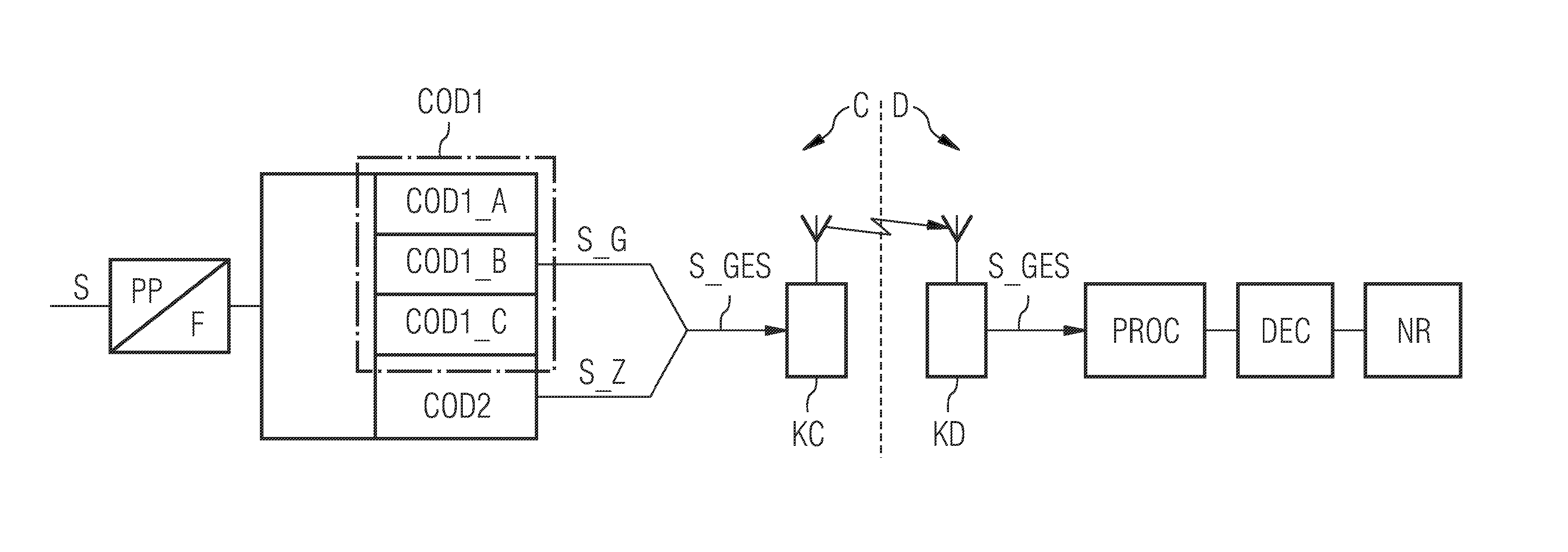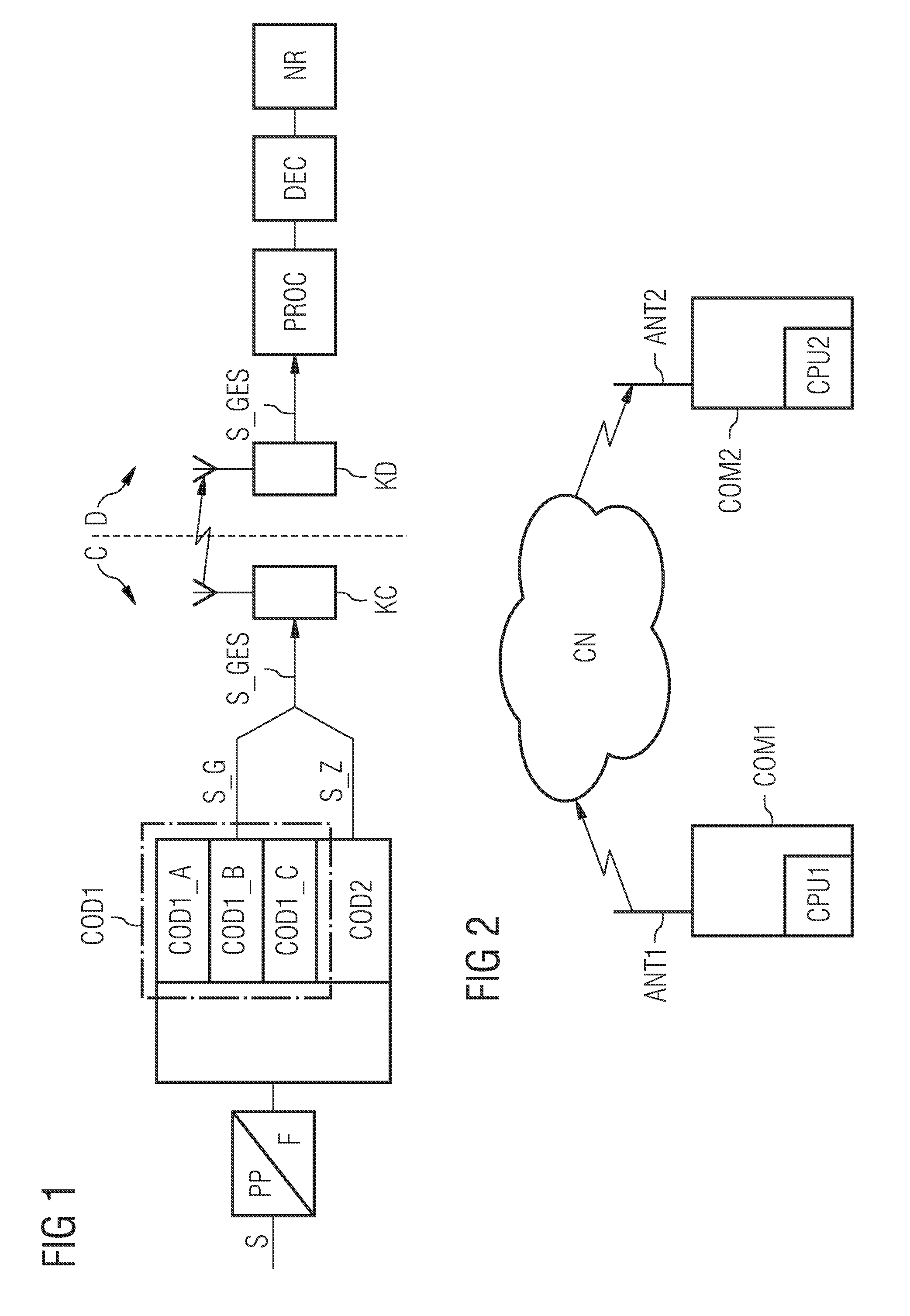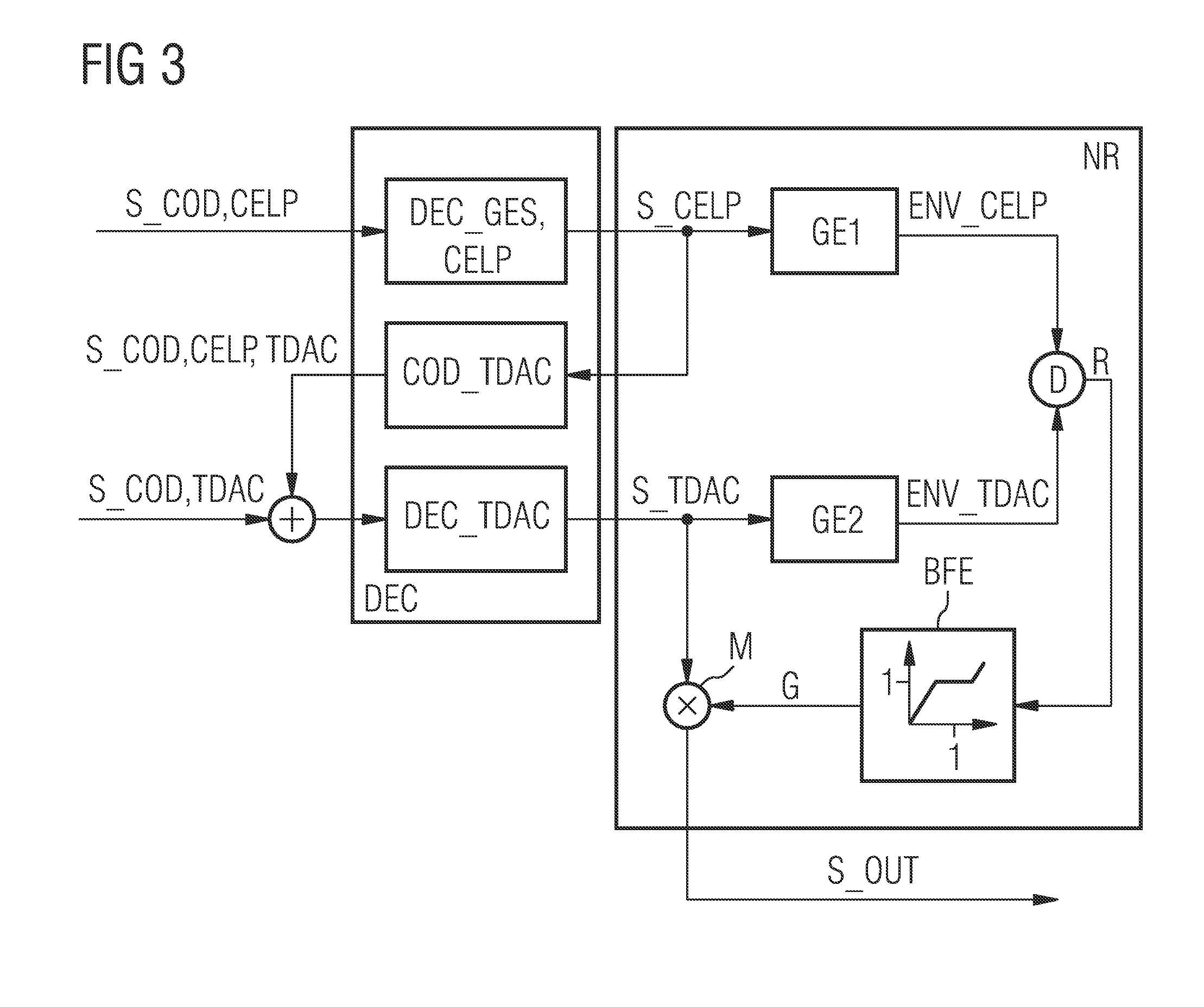Noise Suppression Process And Device
a noise suppression and process technology, applied in the field of noise suppression process and device, can solve the problems of disturbance noise of the pre-echo effect, disturbance noise is clearly audible, and the pre-echo effect disturbance noise is occurrence,
- Summary
- Abstract
- Description
- Claims
- Application Information
AI Technical Summary
Benefits of technology
Problems solved by technology
Method used
Image
Examples
case 2
[0047] The frequency bands A: 0-4000 Hz and B: 4000 Hz-8000 Hz are handled separately (further embodiment): In this case the noise signal is suppressed completely since in the upper frequency band the CELP proportion is zero, and thus the transform codec signal is also limited to the value zero.
[0048] In FIG. 4 (as in FIG. 3) a decoding device DEC and a noise reduction device NR with the main components for schematic presentation of the execution sequence of a level adaptation or pre-echo reduction can now again be seen. The reader is again referred to FIGS. 1 or 2 for the creation of coded signals or for the transmission to a receiver.
[0049] A CELP-coded signal S_COD,CELP (corresponding to signal contribution S_G) is decoded by means of a full-band CELP decoder DEC_GES,CELP′. The full-band CELP decoder in this case comprises two decoding devices, a first decoding device DEC_FB_A for decoding the signal S_COD,CELP in a first frequency band A and a second decoding device DEC_FB_B f...
PUM
 Login to View More
Login to View More Abstract
Description
Claims
Application Information
 Login to View More
Login to View More - R&D
- Intellectual Property
- Life Sciences
- Materials
- Tech Scout
- Unparalleled Data Quality
- Higher Quality Content
- 60% Fewer Hallucinations
Browse by: Latest US Patents, China's latest patents, Technical Efficacy Thesaurus, Application Domain, Technology Topic, Popular Technical Reports.
© 2025 PatSnap. All rights reserved.Legal|Privacy policy|Modern Slavery Act Transparency Statement|Sitemap|About US| Contact US: help@patsnap.com



